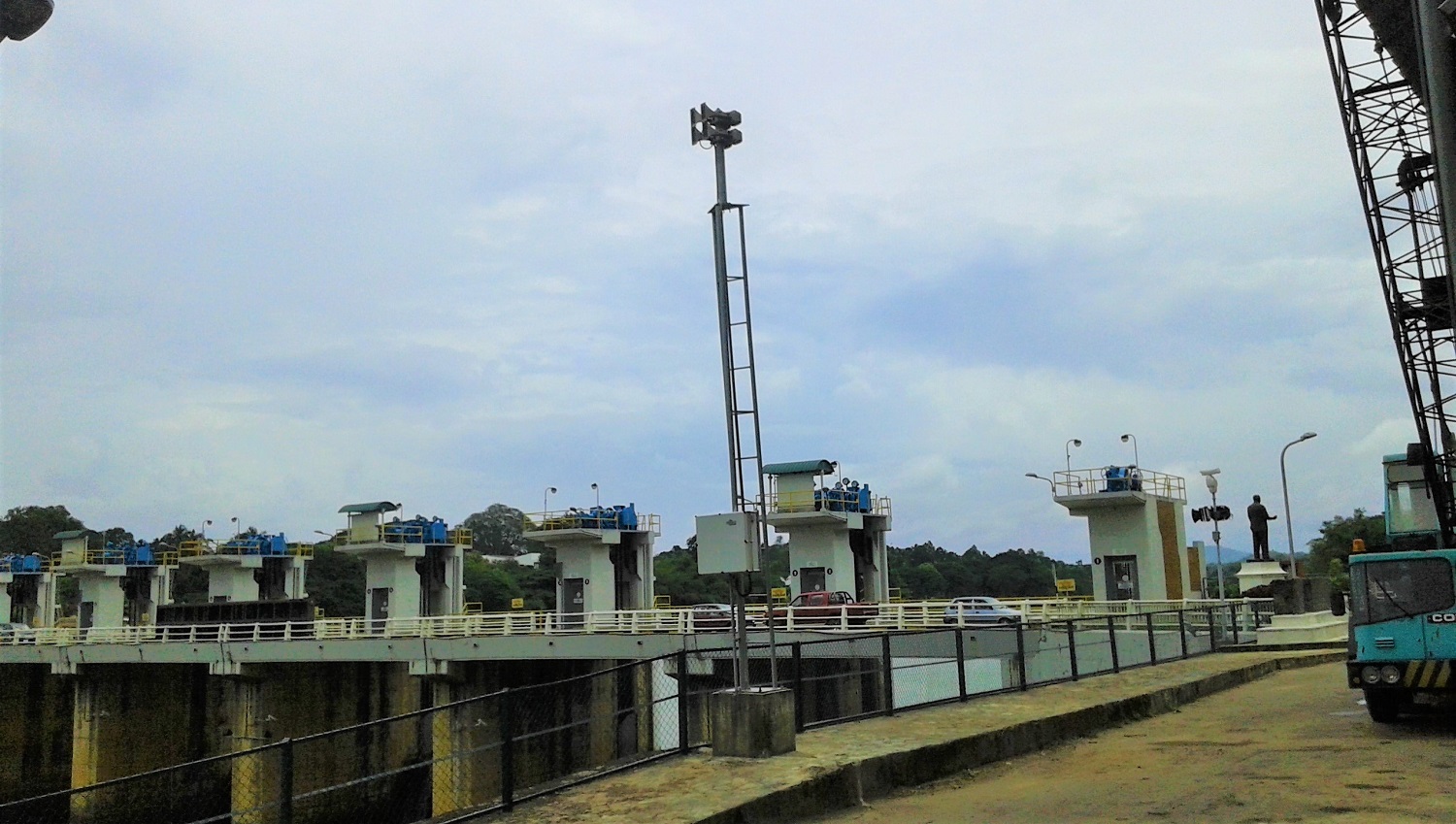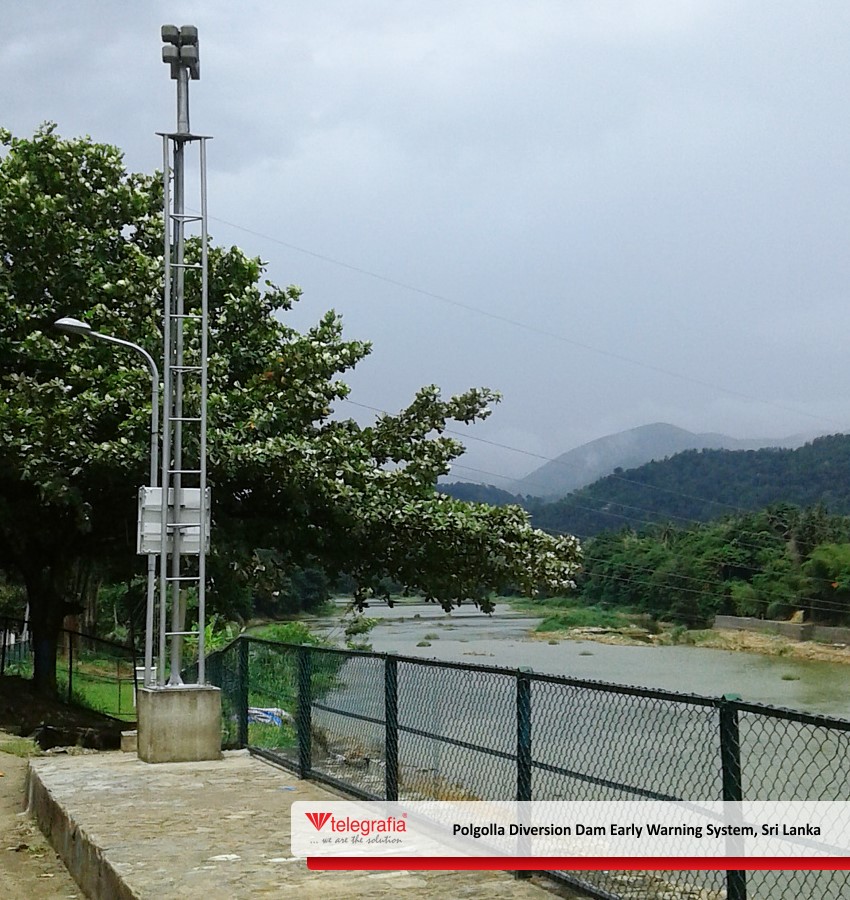
Polgolla Diversion Dam Early Warning System, Sri Lanka
End user: Mahaweli Authority of Sri Lanka
Project: Polgolla Diversion Dam, Polgolla, Sri Lanka
“Do not think because an accident hasn’t happened to you that it can’t happen”, a safety saying dating back to the early 1900s.
Accidents may happen, however, safety precautions can prevent their fatal consequences. Electronic sirens are widely used in the entire world for early warning purposes when fast voice emergency instructions are to be given to a large group of people exposed to danger. Dams have become a fundamental element of many national ecosystems because of their economic, environmental and human social benefits. They play a key role in flood control, water supply management, irrigation, hydroelectric power generation, inland river transportation, and recreation. The great significance of all these positive impacts requires the implementation of high standard dam risk management systems, where a fast and reliable early warning and notification system holds a prominent place.
The Polgolla barrage was built across the longest river in Sri Lanka – the Mahaweli River, located in the Central Province. The main purpose of this 144-meter-long Polgolla concrete barrage is to increase the volume of water that is transferred to the Ukuwela Power Station located in a distance of 8 km from the dam. Because of the proximity of the dam to the human settlement, it was required that an audible emergency system should be constructed. The installation of an intelligent early warning system, manufactured by Telegrafia, the Slovak electronic siren producer, took place in 2015. The Polgolla Diversion Dam Early Warning System was installed to warn inhabitants living on the downstream sides of the dam up to a distance of 2 km from the spillway bridge in case flood gates are opened to release water through the spillway.
Dam Early Warning System in Polgolla
The Dam Early Warning System in Polgolla is a single integrated siren unit of the Gibon line that consists of four 150 W horns installed on a 6 m high pole. The total power output of the electronic siren is 600 W. The siren pole is located on the right bank of the river, 30 m downstream from the spillway bridge. All horns are directed towards the downstream area to receive the maximum warning distance. When the flood gates are operated remotely, the electronic siren also needs to be activated remotely from the control centre by a technical officer. When the flood gates are operated locally, the operator must instruct the technical officer at the control centre to activate the siren from the control unit before the opening of the gates.
The installed dam early warning system has many benefits, which, when combined, create a modern and very intelligent system offering a number of advantages to any user:
- Remote control – the electronic siren is controlled remotely via the RCU15 remote control unit, installed in the control centre, for fast and efficient activation of alarms.
- Multiple warning possibilities – the siren has an internal digital memory for warning signals and voice message storage (with a guaranteed capacity of at least 32 two-minute voice messages); RCU15 remote control unit has a built-in microphone to offer operators more flexibility in delivering live voice messages in addition to previously recorded warning signals and emergency instructions.
- Cost-effectiveness – Telegrafia’s dam early warning solution is a complete all-in-one and self-sufficient system designed for high-quality performance and cost-effectiveness; it is made of light and durable materials, equipped with small horns, and has low energy consumption in standby mode (less than 10 W).
- Independence in terms of power failure – the siren is equipped with two lead-acid batteries, providing power backup in case of any power failure. Alarms can be triggered even 72 hours after the power failure, which is of curtail importance for a reliable warning system.
- Remote autodiagnostics – the RCU15 remote control unit provides the siren with regular autodiagnostic functions, running time-efficient silent tests, and measuring the most important siren parameters, hence increasing a customer’s convenience and decreasing the cost of regular maintenance. It is quick and easy to use, so only by pressing a single button the operator can detect the siren status within a few seconds. Thanks to this advantage, they can feel reassured that the siren is fully operable and ready for use.
- Powerful output & Fast installation – the system can ensure a high level of audibility and maximum sound coverage of an endangered area due to the light-weight and easily-mountable horns.

The article was written by
Michal Rosinski
Michal has lived in six countries, and he can speak four languages. He represents Telegrafia in the USA, Asia, Australia and Germanic countries as an international business manager. He is a big fan of Jamie Oliver, eats healthily, but he still loves unhealthy food. He does not agree with Mark Twain that people can live on a good compliment for two months. Michal is a bookworm, believes in experience-dependent brain neuroplasticity that takes it roots in the idea of what we focus on. He agrees with Raj Koothrappali that Aquaman sucks; he is familiar with the fact that not Mount Everest but Olympus Mons is the tallest mountain known to man.

